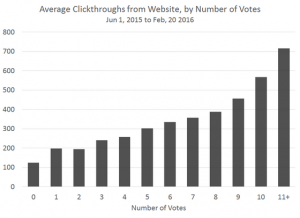This is a summary of links featured on Quantocracy on Tuesday, 05/31/2016. To see our most recent links, visit the Quant Mashup. Read on readers!
-
Diversification Will Always Disappoint [Flirting with Models]Summary For its ability to reduce risk without necessarily sacrificing potential reward, diversification is known as the only free lunch on Wall Street. Diversification provides investors with the important ability to invest in the face of uncertainty. When viewed for its pieces instead of as a whole, a well-diversified portfolio will likely always contain an element that disappoints. This has
-
mini-Meucci : Applying The Checklist – Step 1 [Return and Risk]Introduction In this mini-Meucci series of posts we'll put the 10 steps of The Checklist into practice by constructing a low volatility portfolio in Python. This toy/basic example will be a short tourist trip, highlighting key attractions that you can then explore further… Of course, these posts should be read in conjunction with the latest slides (I'll be referring to the slides
-
A Few Little Links [Factor Wave]I'm currently working on three things: a VIX option trading strategy, a piece about how factors relate to earnings announcements and a Kelly criterion type thing for options. But none is particularly close to being done. So I thought i would post a few links to articles that I found interesting. I'm not (just) doing this to put up a blog post. I think both of these are good reads. First,
